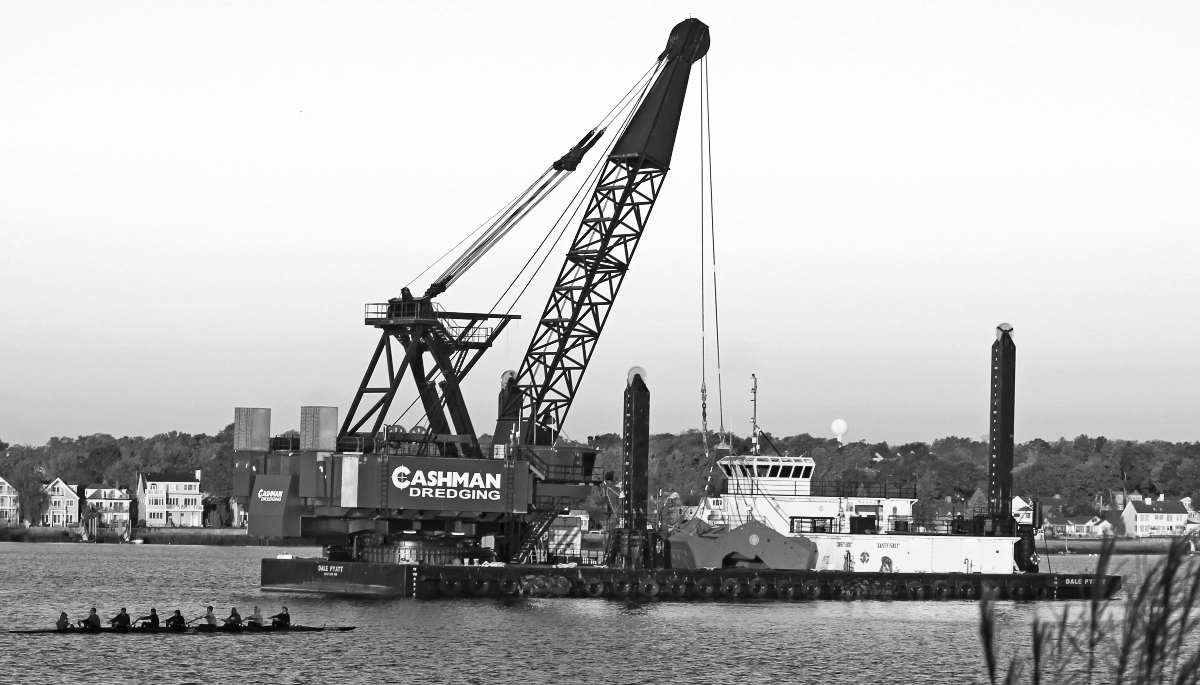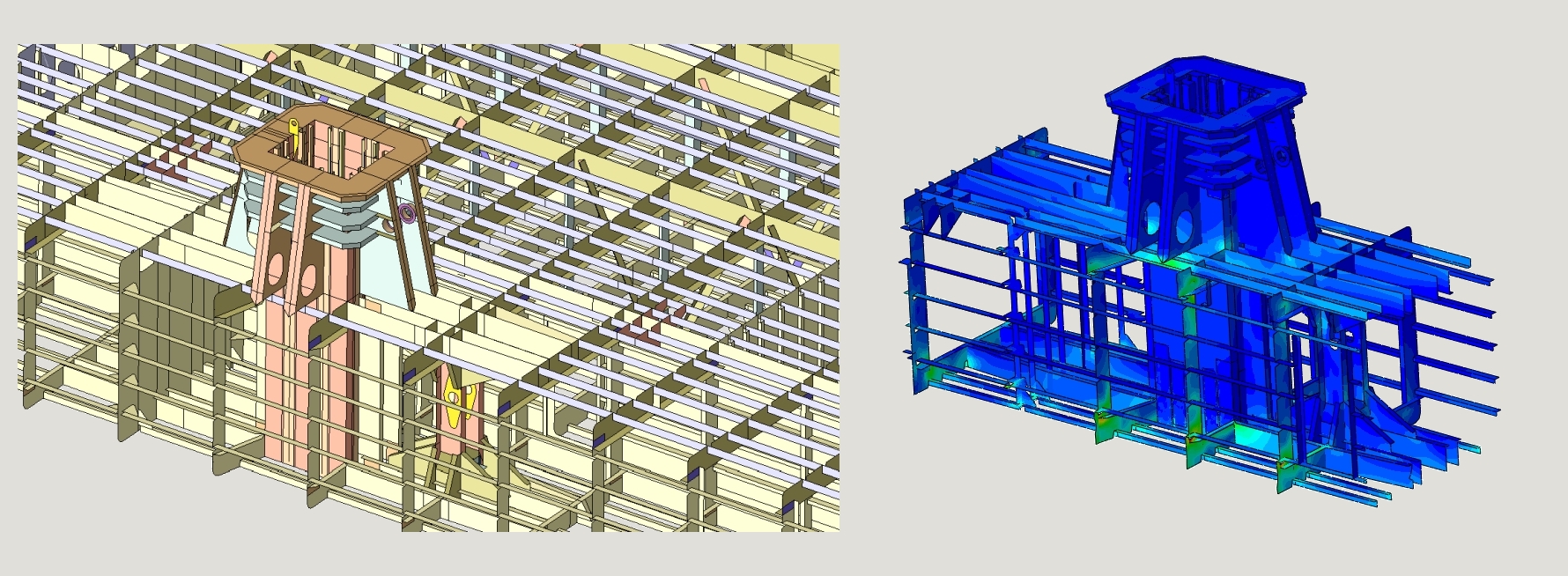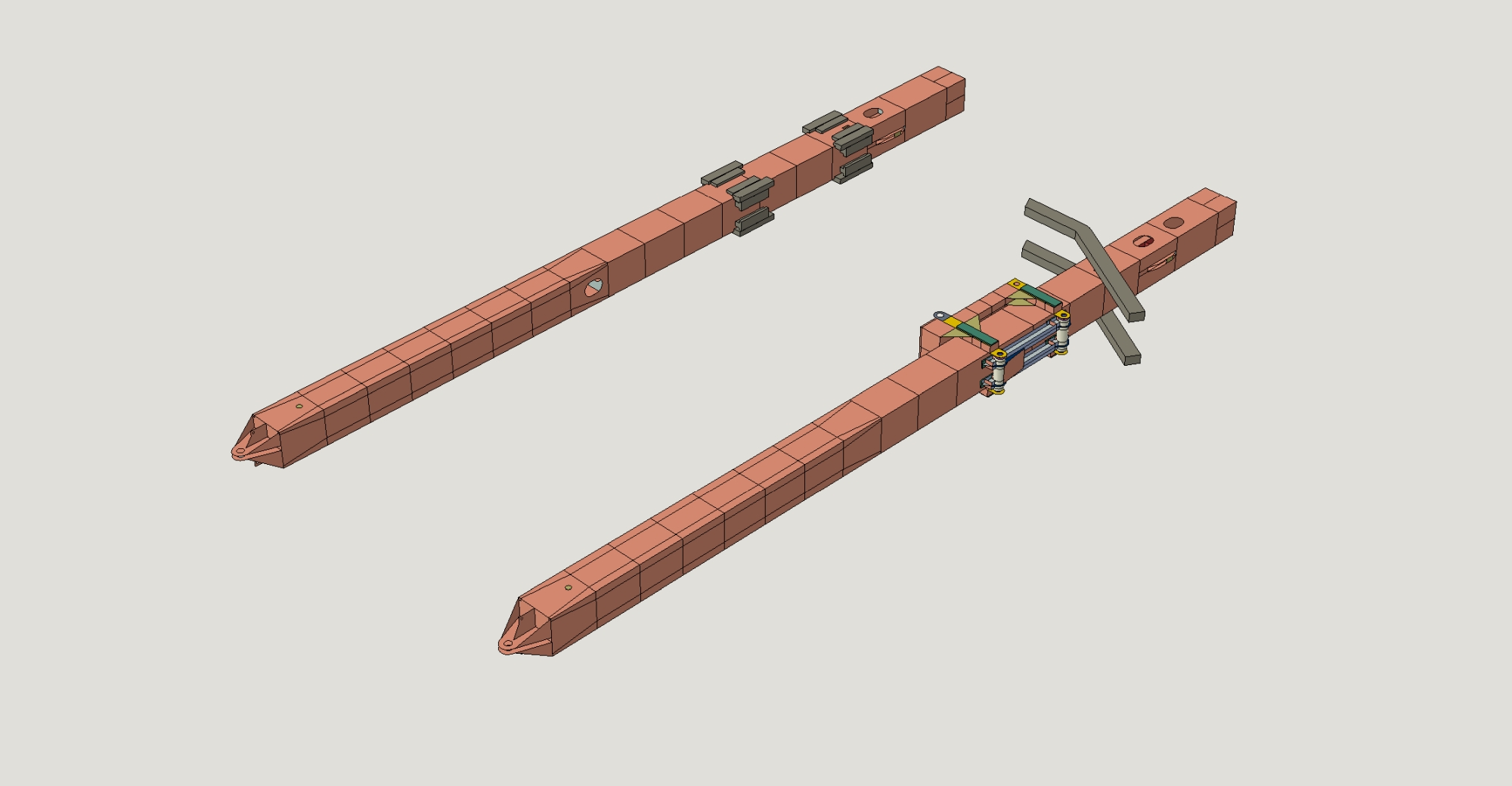dipper
dredger
SCOPE
A dipper dredger is an essential machine used for removing sediments or soil from bodies of water such as rivers, lakes, or harbors. It comprises several components that work together to carry out the dredging operation. The main body of the machine, usually a barge or vessel, is called the hull and serves as the platform for all other components. The dipper, a scoop-shaped bucket attached to a crane that can rotate over 180 degrees and mounted on a carbody, performs the actual dredging. The spuds ensure that the barge remains stable during excavations. However, the cyclic loading caused by the crane exposes the entire structure to fatigue. Our task was to assess the lifespan of the barge, identify potential weaknesses, and recommend improvements to mitigate fatigue damage.
APPROACH
The geometry of the barge was accurately modeled in Abaqus/CAE based on the customer-provided drawings, with on-site inspections carried out to ensure the model's fidelity to the physical structure. Seven key components were modeled, including the barge, crane carbody, deck house, generator room, front and walking spuds, and the walking spud carriage. Given the scale of the structure, a combination of beam, shell, and solid representations were employed, ultimately resulting in a finely meshed model with over 10 million degrees-of-freedom.
After the model was created, 24 different simulation scenarios were developed to evaluate the fatigue spectrum of each detail in the model. These scenarios involved varying the position of the spuds and the load position relative to the centerline of the ship, in combination with operational conditions provided by the customer. The purpose of these simulations was to identify any weak spots in the barge's structure that could lead to fatigue failure over time.
RESULT
We conducted a thorough structural evaluation and suggested relatively simple design modifications that could improve the existing fatigue life.


FE geometry of the barge

Close-up view of a detail and typical stress distribution

FE models of the spuds